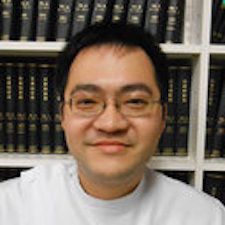Article
Majority of Japanese Patients with GPP Treated with Biologics
Author(s):
There are 8 biologic therapies currently approved for GPP in Japan, with IL-inhibitors being the predominant therapeutic option.
Koremasa Hayama, PhD

A new cross-sectional study found that roughly two-thirds of patients in Japan with general pustular psoriasis (GPP) were treated with biologics in order to manage their disease, which investigators attributed to the 8 biologic therapies currently approved for GPP in the country.
Investigators also noted that the public financial aid for medical costs that patients could receive in Japan for GPP-which is considered a designated intractable disease by the Japanese government- played a significant role in the access to biologics therapy for psoriatic disease.
With the broadening of treatment options for GPP in Japan, Koremasa Hayama, PhD, of the Department of Dermatology at Nihon University, sought to better define the current real-world status of GPP treatment in the country.
Hayama and colleagues collaborated with 641 hospitals and facilities across Japan, administering questionnaires that sought to determine the scale of each facility by the number of hospital beds, as well as the number of GPP patients diagnosed based on appropriate criteria established in Japanese guidelines who visited these facilities in the past year.
The questionnaires also gauged disease severity at the last visit of 2021 and the therapeutic regimens that were considered for each patient. Once completed, questionnaires were sent to Nihon University School of Medicine.
A total of 349 facilities submitted completed questionnaires. Among them, over half (57.6%) saw at least 1 patients with GPP in 2021.
A total of 874 patients with GPP visited these facilities, with the patient population being comprised of 433 females, 406 males, and 36 patients whose gender was not defined.
Notably, a majority of patients (78.2%) had mild GPP, while 10.8% had moderate disease, and 6.8% had severe disease.
Topical corticosteroids were used for nearly half (48.9%) of all patients, and commonly used oral medicines included etretinate (19.1%), cyclosporine (10.2%), corticosteroids (5.9%), apremilast (5.3%), and methotrexate (3.1%).
As previously mentioned, a majority of patients (67.5%) were treated with biological agents, with 158 patients (18.1%) being treated with TNF inhibitors, 291 (33.3%) with interleukin (IL)-inhibitors, and 135 (15.4%) with IL-23 inhibitors.
Only 39 (4.7%) patients received ultraviolet therapy while 25 patients (2.9%) experienced granulocyte/monocyte adsorption apheresis.
Investigators noted that TNF inhibitors were most prevalent in smaller Japanese cohort studies from 2016-2019 and 2010-2020, in addition to a recent study on an insurance database from 2010-2019. Despite this, patients were more often prescribed IL-inhibitors.
“This is consistent with the increasing use of IL-17 inhibitors for GPP reported by the analysis of Japanese national inpatient database from 2010 to 2019,” the team wrote. “Expanding drug availability over time may lead to the change in treatment trend.”
The study, “Current trend in the treatment of generalized pustular psoriasis in Japan: Results from a questionnaire-based epidemiological study,” was published online in The Journal of Dermatology.





